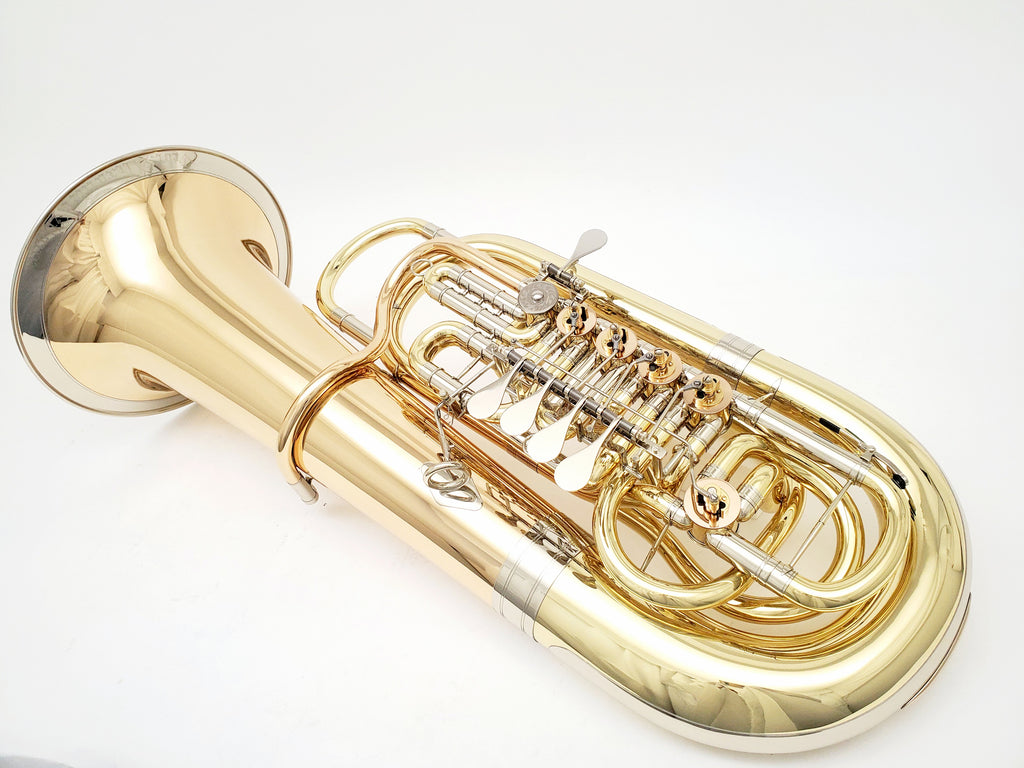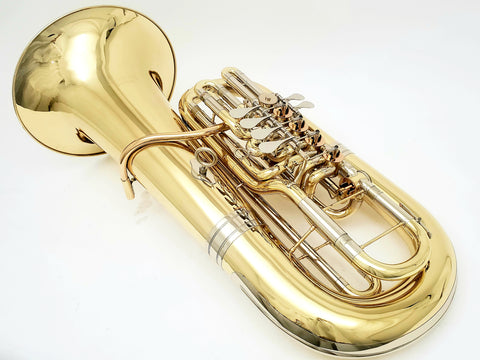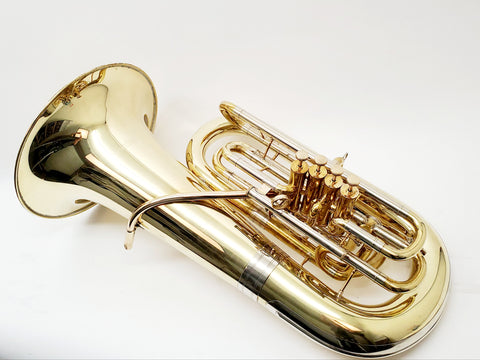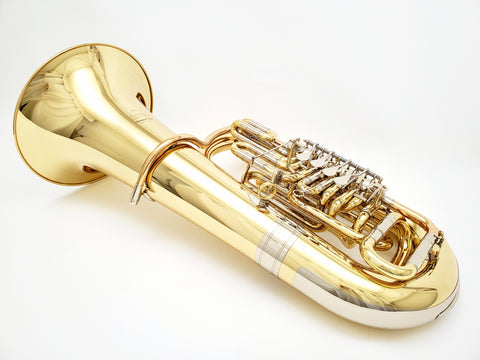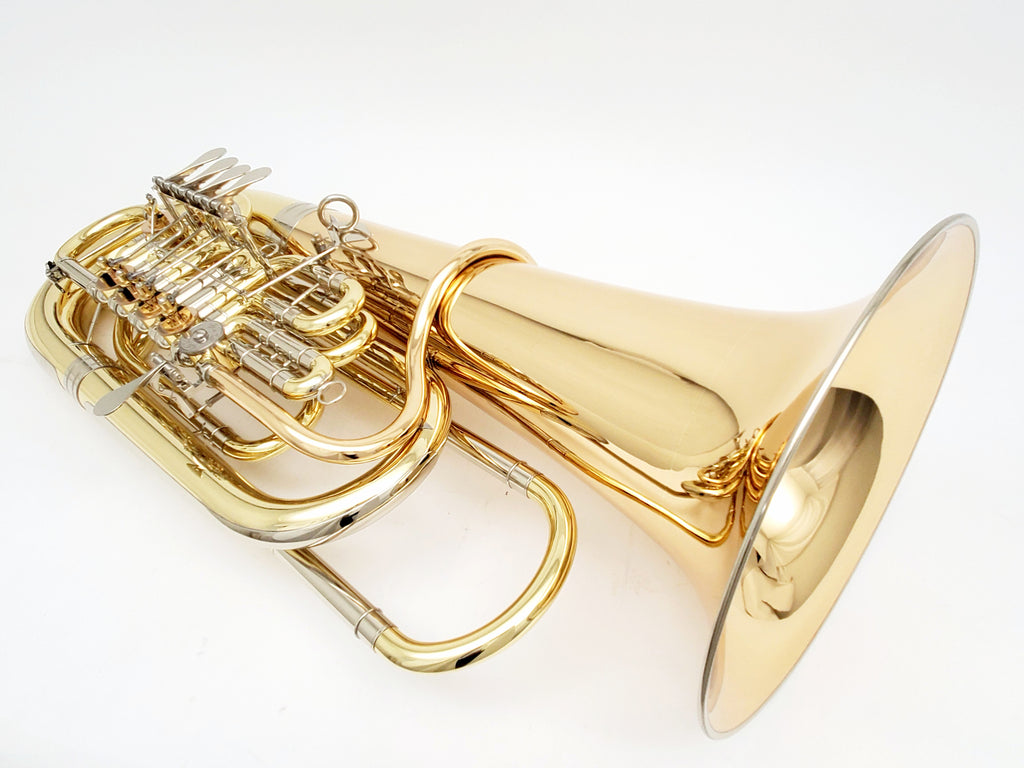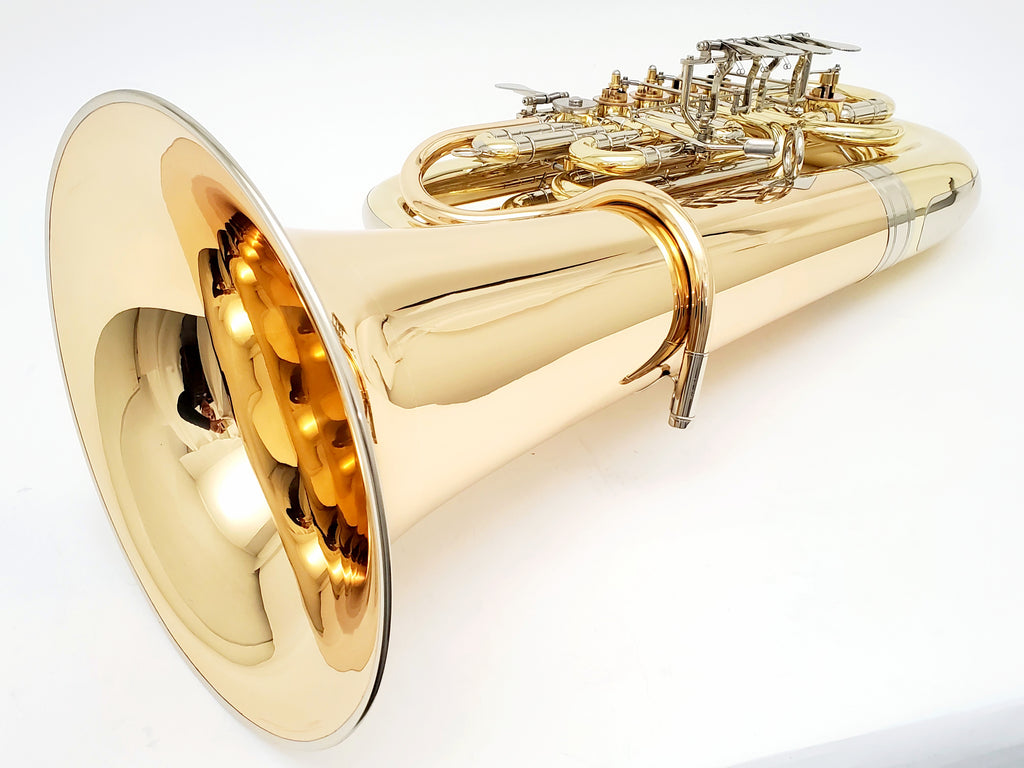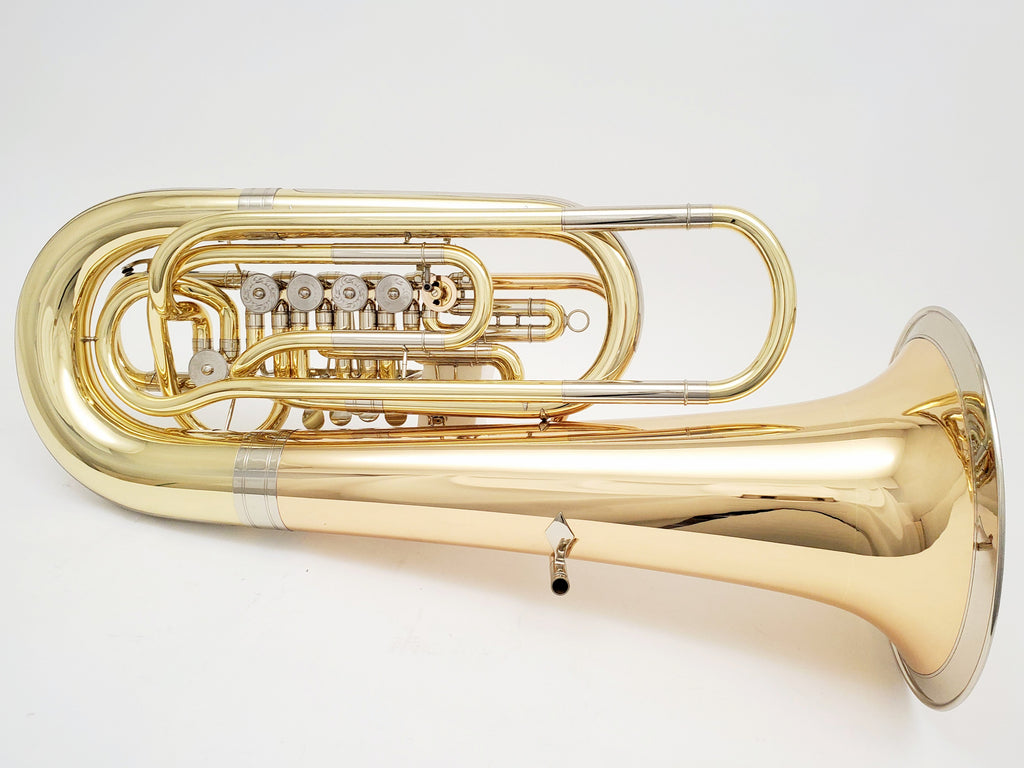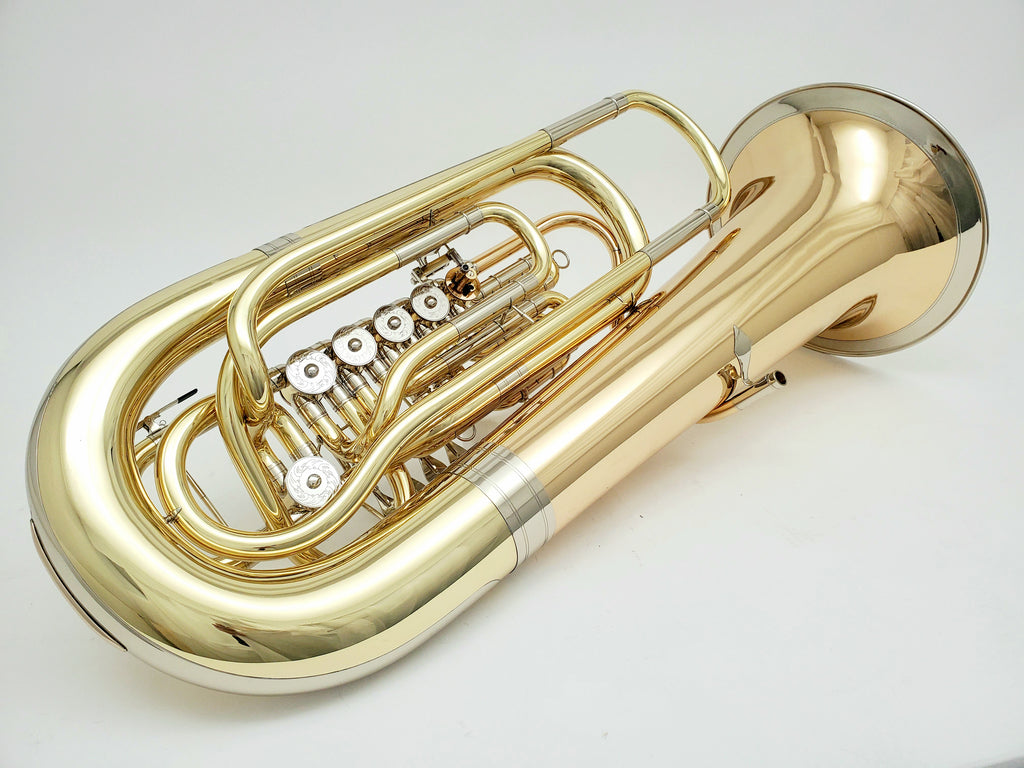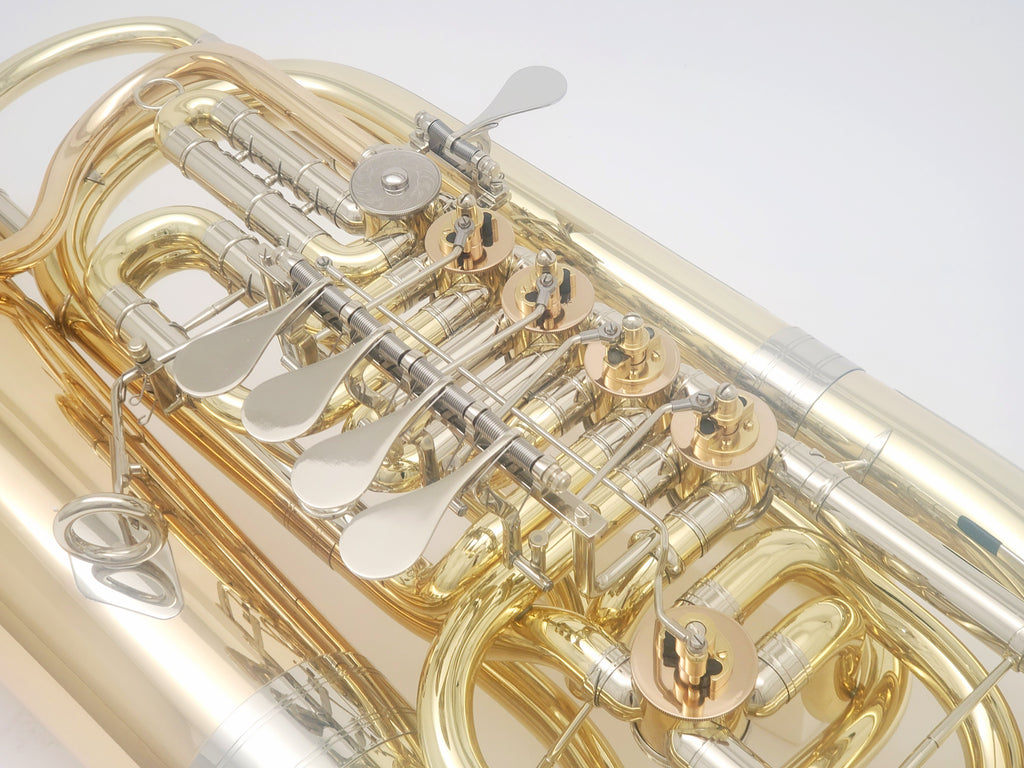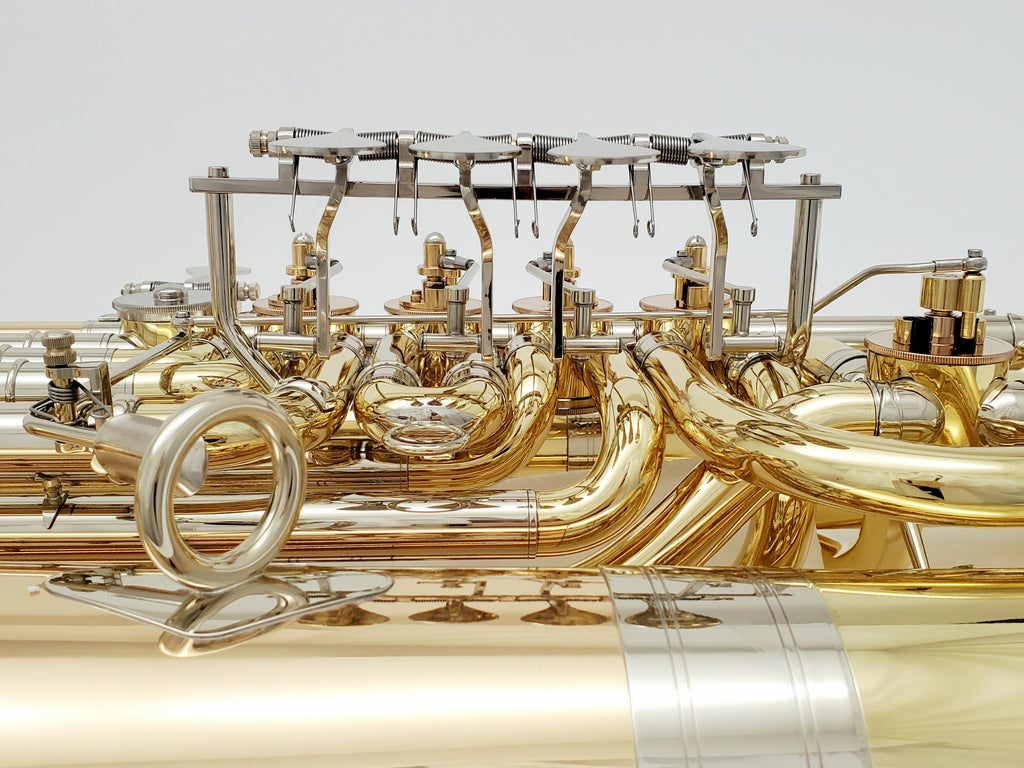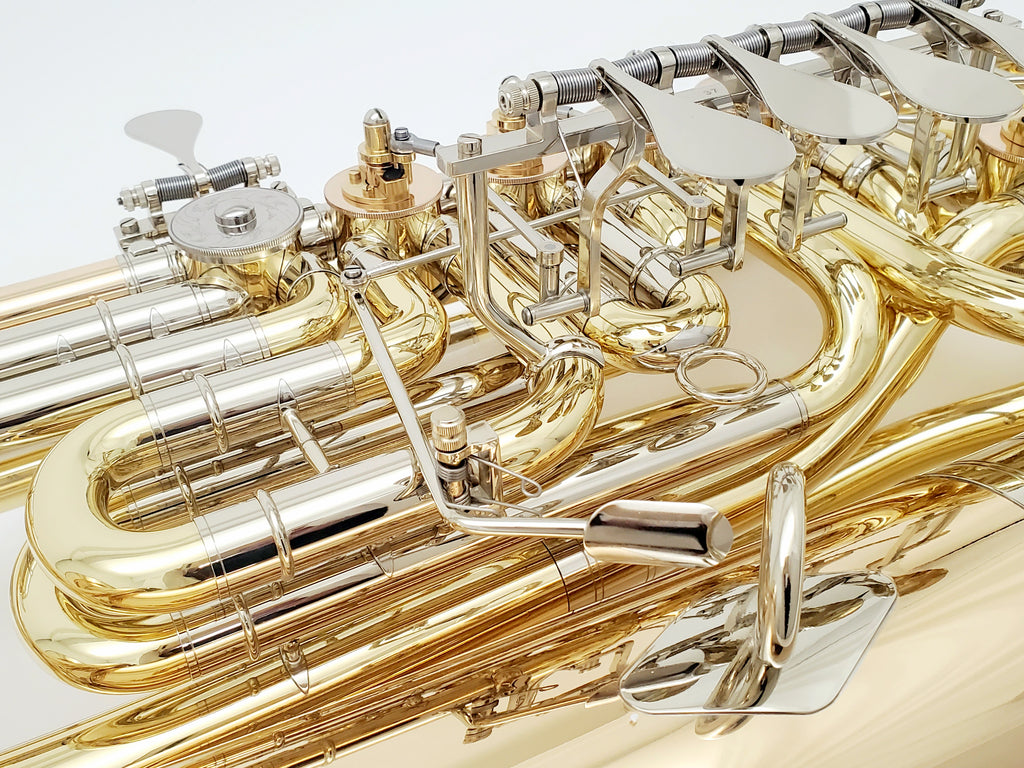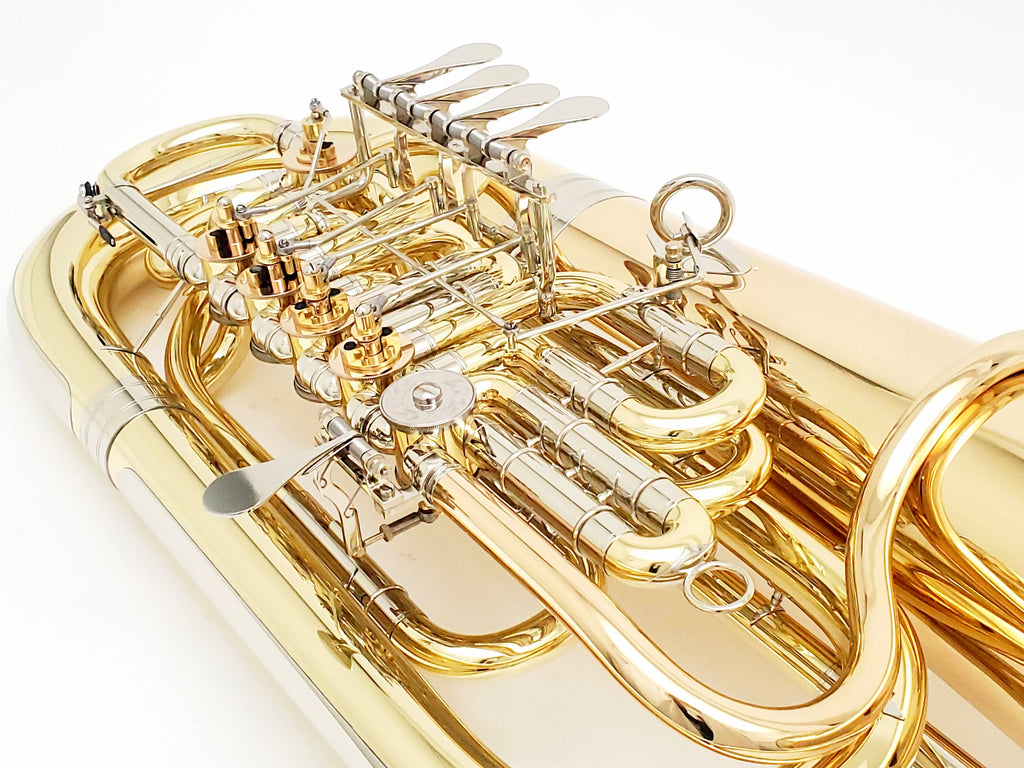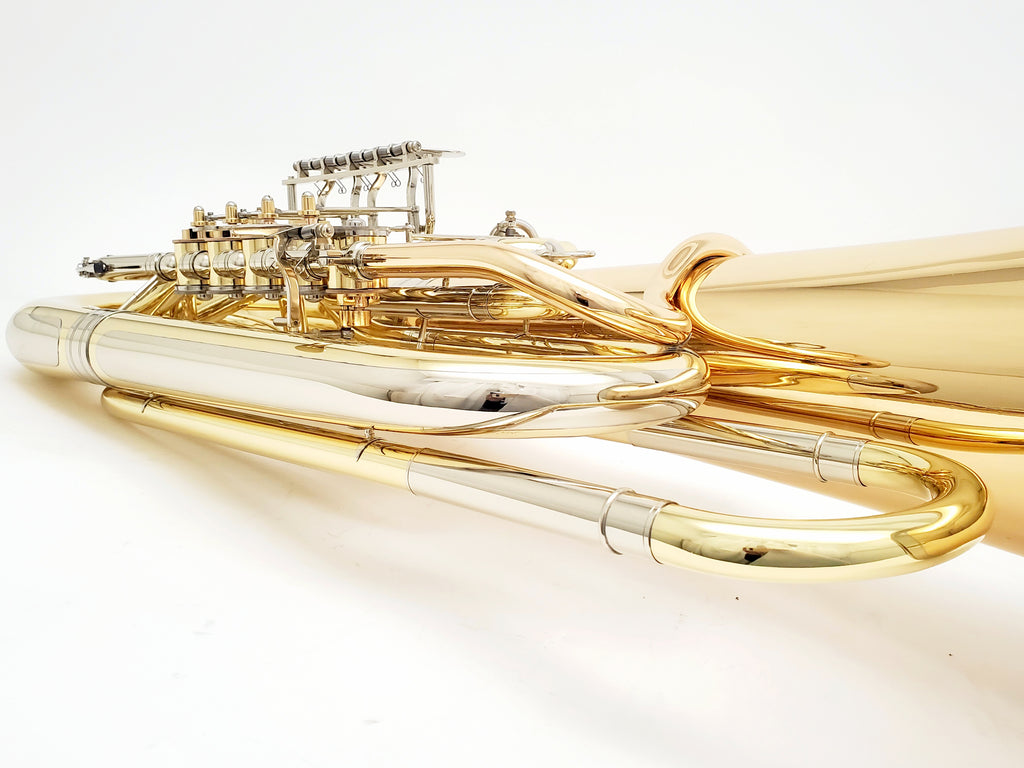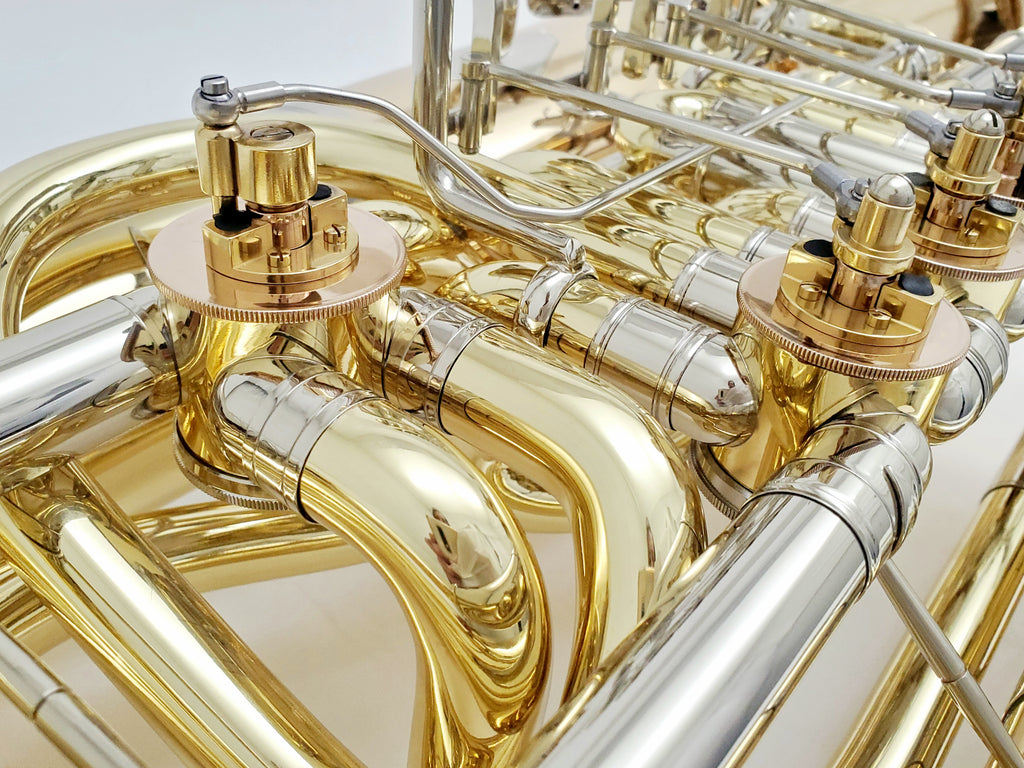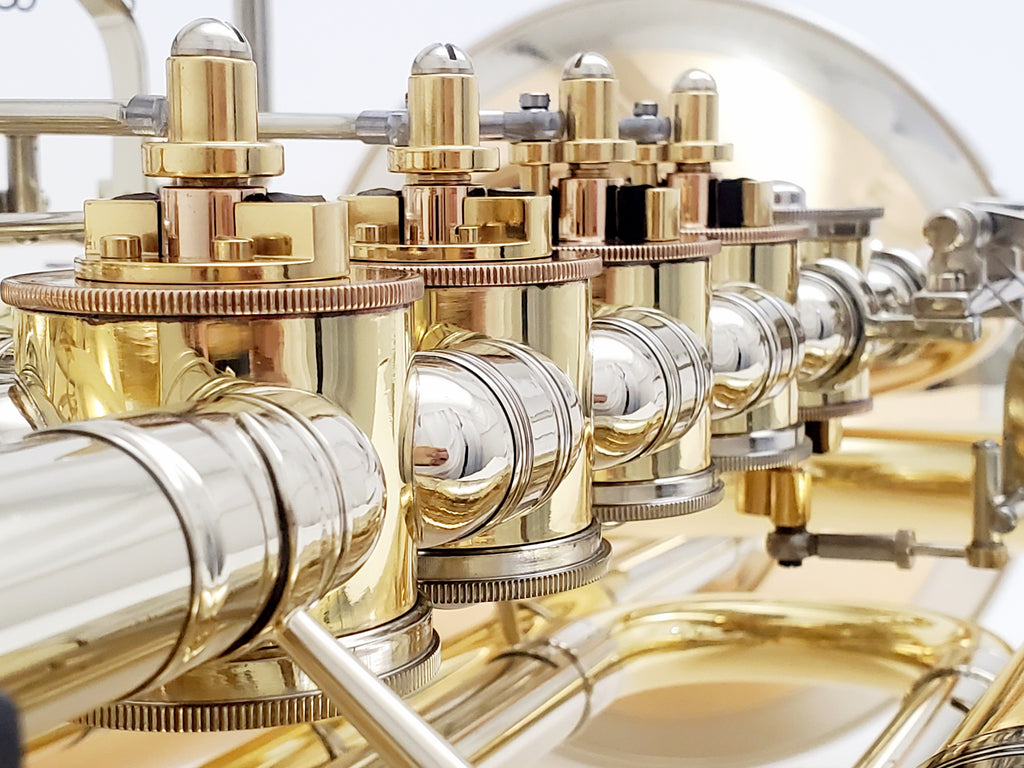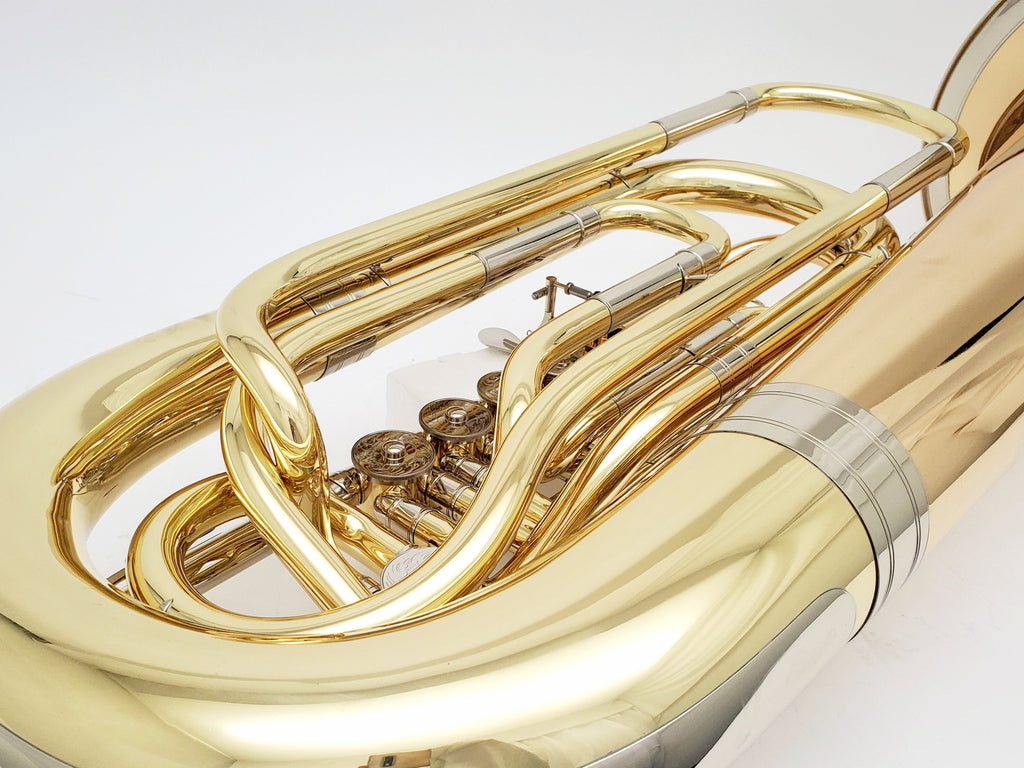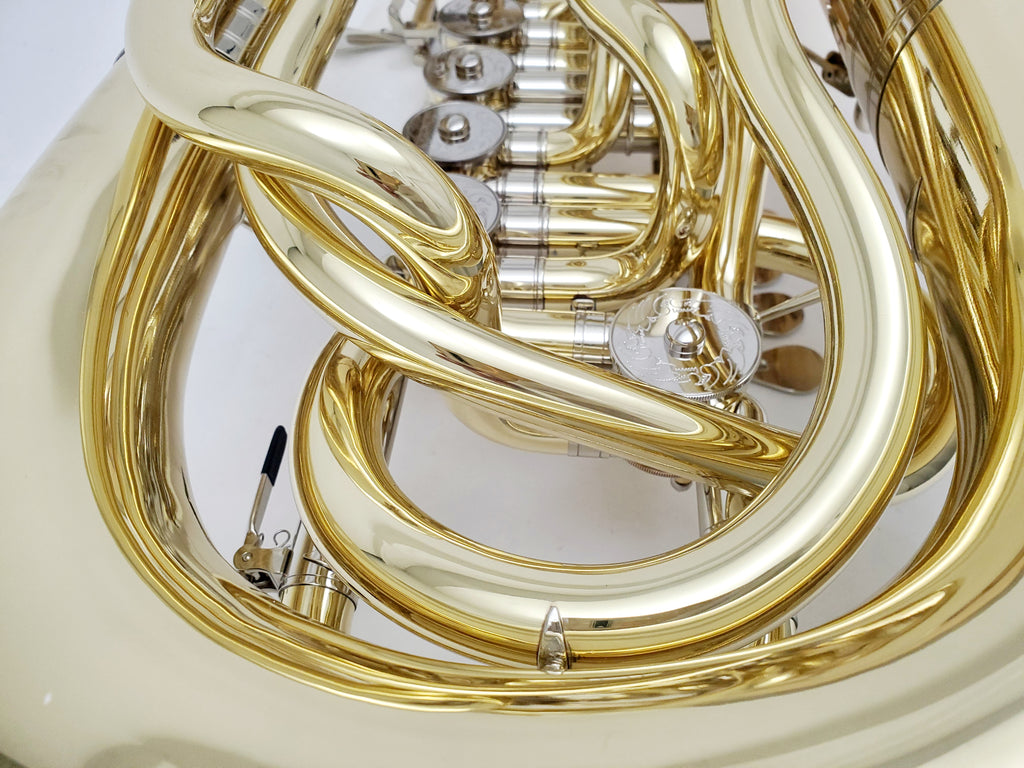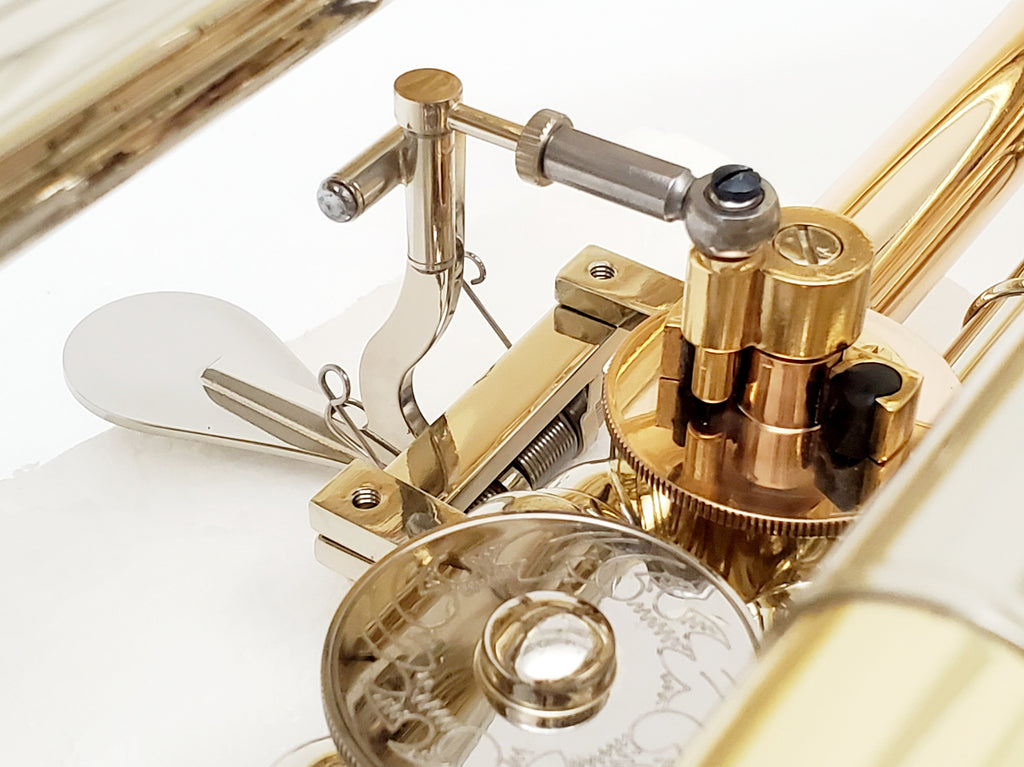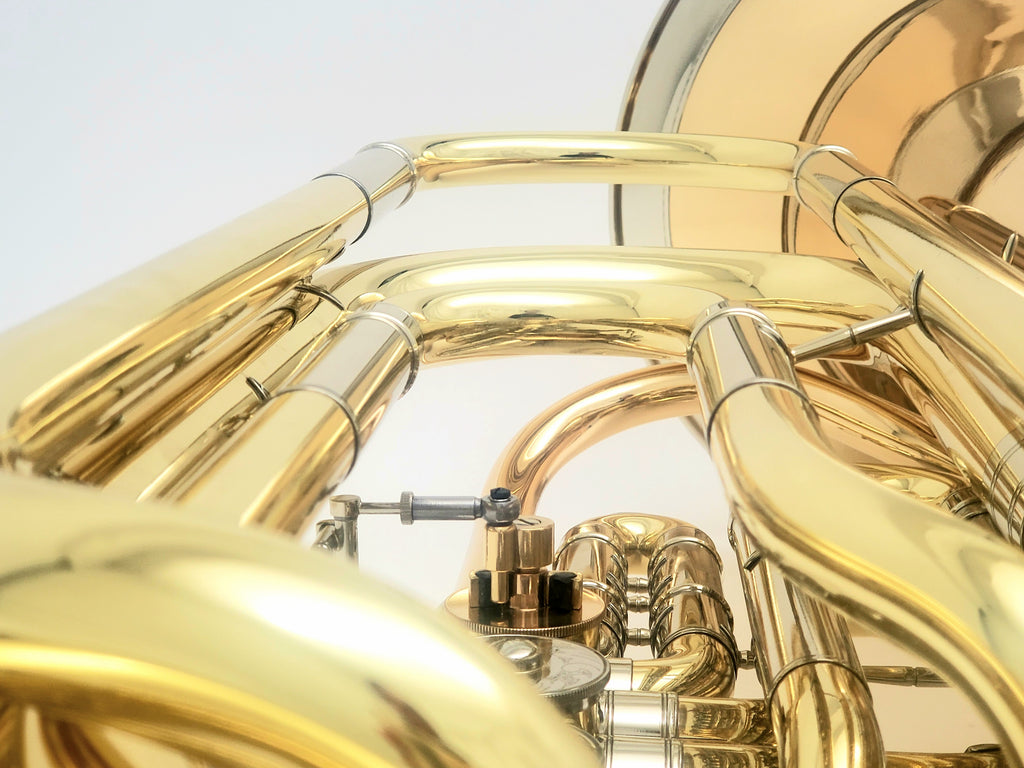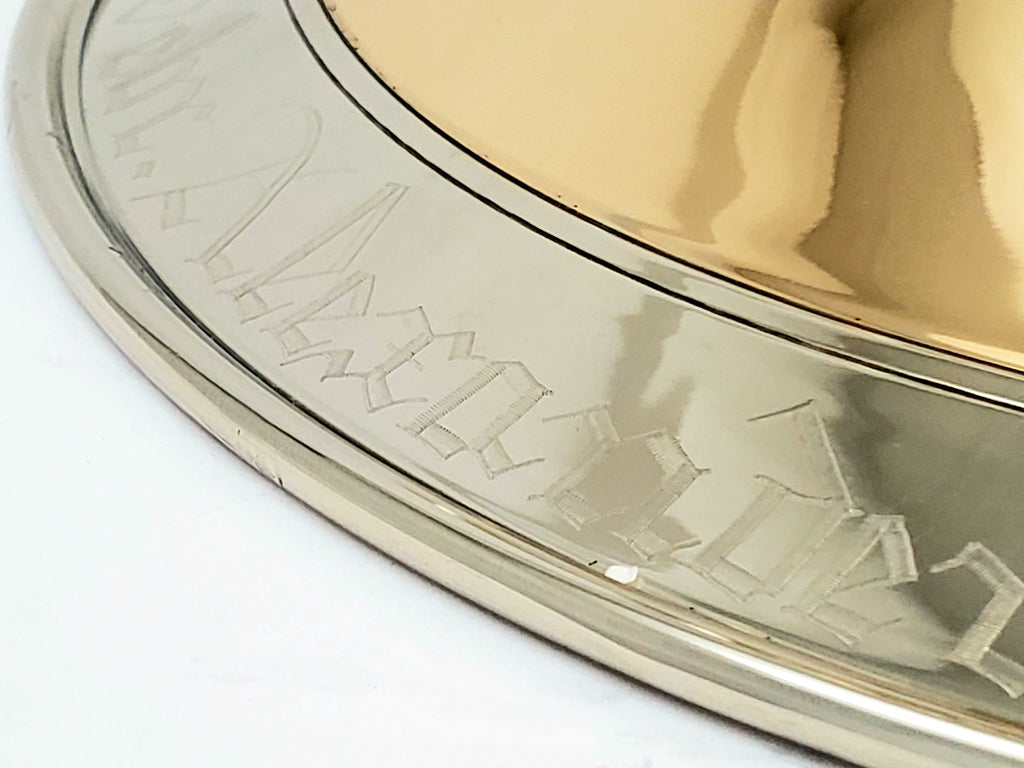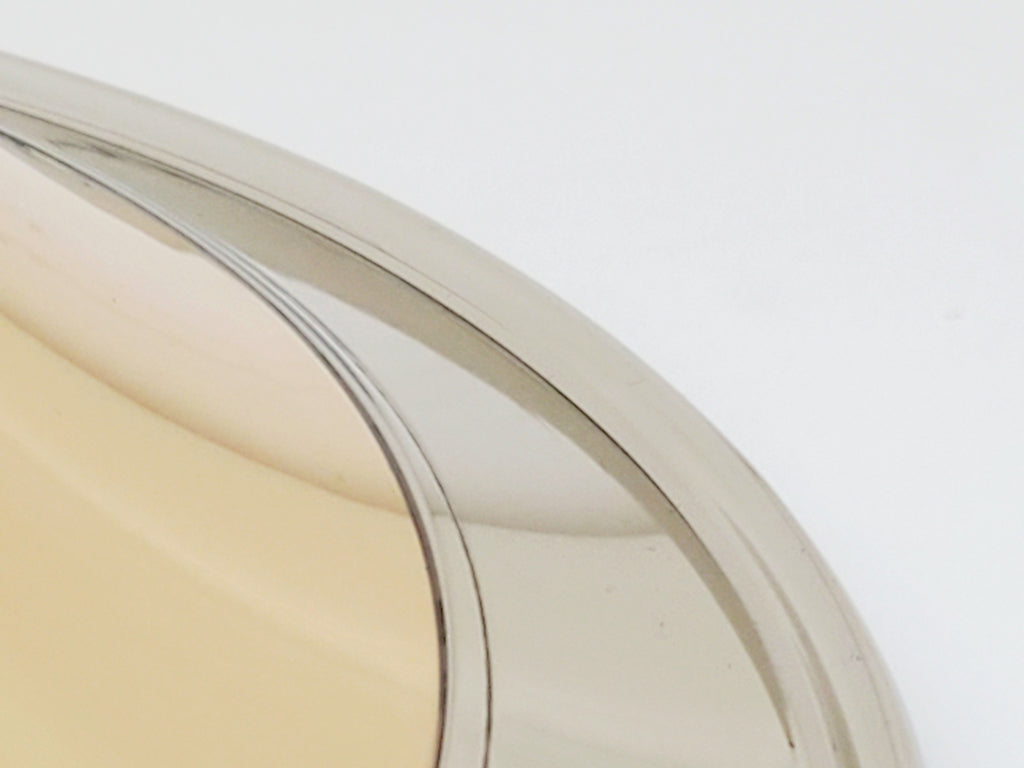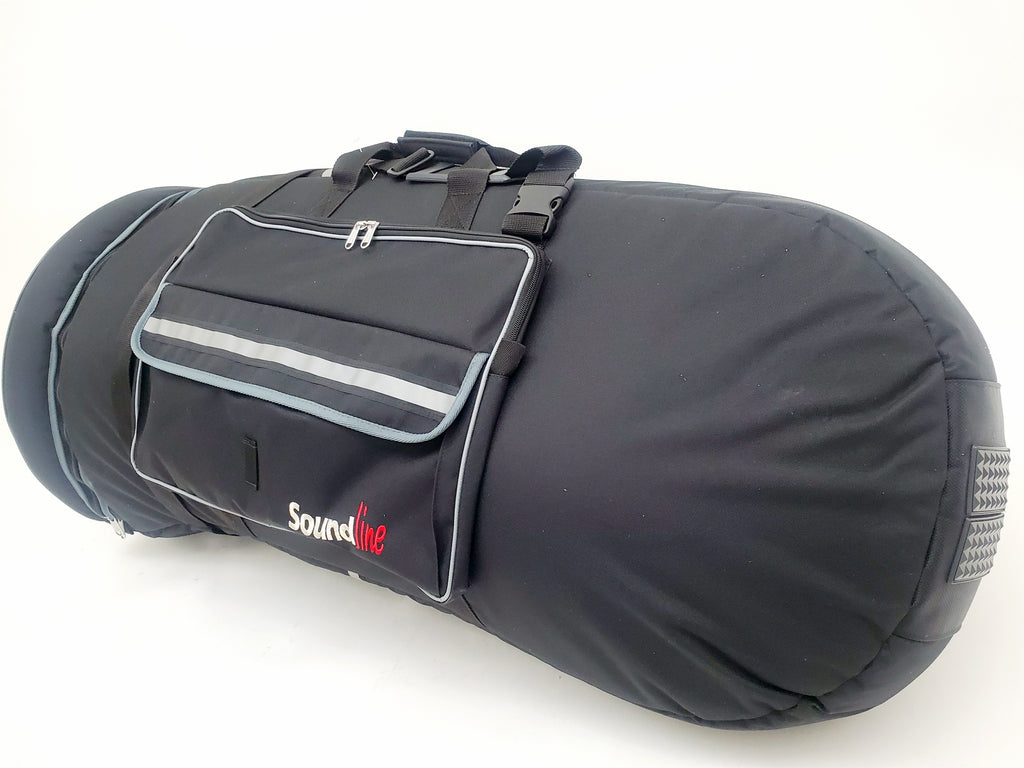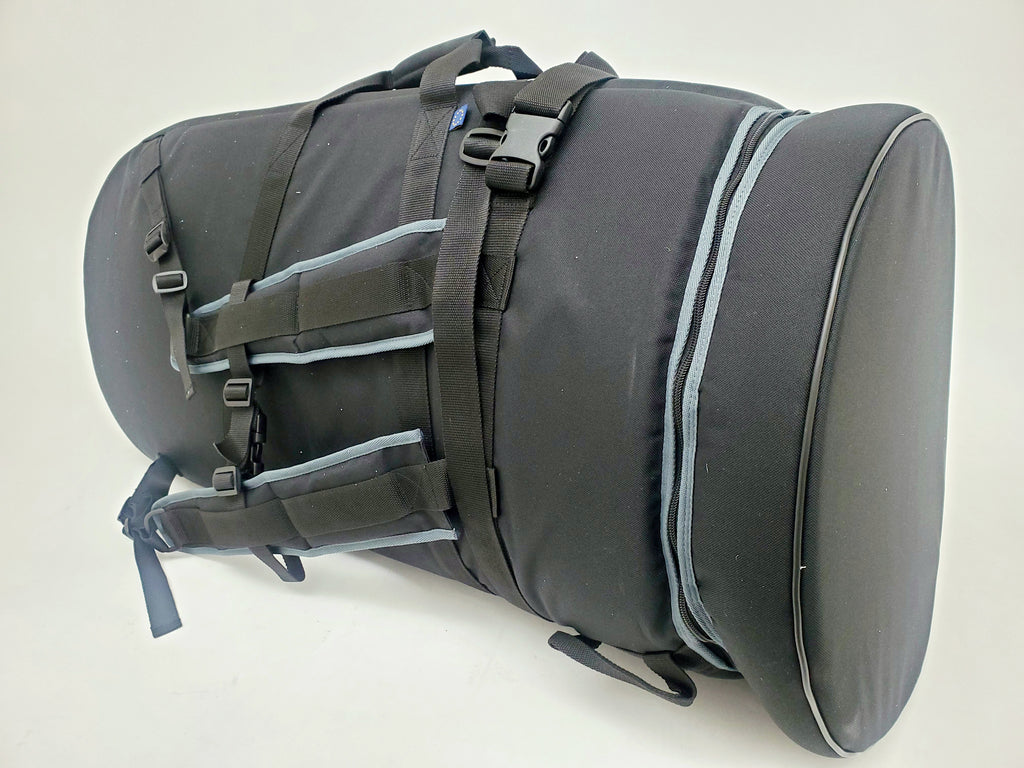Alexander 155 6-Valve Rotary F Tuba with Quint Rotor
$14,800.00
Item Details
Here we have a new custom F tuba built in 2024 by Alexander in Mainz, Germany. This Alexander 155 F tuba has 6 rotary valves, the fifth rotor being of larger bore and located after the tuning slide. Tuned to a perfect fifth, this quint rotor tunes this tuba to BBb, as the normal F tuba fingering of 4-5 (1-2-4) would do. But as it's done here, the tubing you add is of larger bore (21.5mm) and is further along in the bugle. It's not exactly the taper for a big open BBb tuba bugle, but it's closer than any design that has all of its six rotors in a row. The Alexander is the closest we have to a double tuba.
In addition, this Alexander soars as a solo instrument, partly because its first four rotors are slightly smaller bore than the .750" (19.0mm) tubas that abound. At 18.5mm rather than 19.0mm, you'll feel a higher level of response and center right away with no sacrifice in low range response. The fourth rotor is 19.5mm.
The offset quint rotor is not as unusual as it may seem. The British style 3+1 tuba increases its bore through the valve set in a similar manner. Their ergonomically placed 4th piston (quart) is further along the bugle, so it gets to be larger bore, thus provoking an open feel in the low range. Even the 4-front piston Besson 983 tuba has several extra inches of tubing on the open bugle between its 3rd and 4th piston. This properly places the larger bore 4th piston further along the bugle. So there you have it.
Dare to be different. The fifth rotor, activated by your right thumb, is the change valve, just like a double horn. The sixth is on the left hand as normal.
Alexander tubas tend to be very light weight because their large tapered bows are fabricated of sheet brass rather than tubes. It's a trait that's immediately noticeable - a light tuba? Yes, pick it up and see. Weight: 16.75 lbs, 7.60 kg. Then play. This lightweight design translates into a fast, clear response and a lively tone. Push it and it lights up when you want. And it's malleable - when you know how to play around with an instrument and make it do your bidding, this one does that. The Alexander isn't a bazooka, its sound is captivating, with character. We also specified a gold brass bell here - the softer metal of this high-copper material for the bell makes it sound like a larger, mellower instrument and adds warmth and breadth to the sound. A GEWA Prestige gig bag is included, along with Alexander mouthpiece and accoutrements.
Remembering why this tuba is even here... Some time recently B&S/MW advertised a new F tuba like this, one featuring a large-bore quint rotor and three triggers. That seemed excessive but I received more than one inquiry about it. Why not instead buy a new Alexander like this, the original model, the real deal, custom and light? It's less expensive and it doesn't need three triggers.
Any rotary F tuba is temperamental in the low range. The right mouthpiece helps. First choices to try: the included JK/Alex, Tucci HMF Paul, Tucci RT-64, RT-64S, Giddings. My favorite continues to be the RT-64 so far.
Low C with fourth valve is good. 1-2 D, you have to know how to hit it. Every other note is good. Third slide has just enough pull. Open C and first valve G are very good, close enough to be fine. Low Bb played with the quint rotor is very satisfying. The Alexander is a very playable solo tuba with a voluminous low range and a lively sound.
Key Lever Action
- 1, 2, 3, 4 -- right hand as normal
- 5 right thumb -- quint to BBb
- 6 left hand -- long half step, convertible to short half step
What about the other fingerings?
If you wish to use the quint rotor, your other rotors are still F tuba length, so some creative fingerings should be used. Here are ideas...subject to change...
- C 4
- B 4-6 or 2-4
- Bb 5 or 2-4-6
- A 5-6 or 2-5 or 2-3-4
- Ab 3-5 or 1-2-5
- G 4-5 or 1-2-3-4-6
- Gb 2-4-5 or 4-5-6
- FF 0 or 3-4-5 or 2-4-5-6 or 1-2-4-5
The sixth rotor has a removable ladder slide. It can be tuned to a short half step. You'll have to figure out those fingerings on your own.
There's room for discussion - and options. All those fingerings are probably fine. It depends upon how you blow, what the riff might be, the tempo and duration required, and the key of the song. This may seem rash, but sometimes a player might need to write a fingering or two on their part as a reminder.
Specs: Alexander 155
- Made in Germany
- Key of F
- Weight: 16.75 lbs, 7.60 kg
- Body of yellow brass with nickel trim
- Nickel inside and outside tuning slide sleeves
- Fixed thumb ring
- Made without strap rings
- Bell of gold brass, 38cm diameter, large throat, with engraved nickel garland
- 4 rotors in 18.5mm bore, 0.728"
- 4th rotor in 19.5mm bore, 0.768"
- 6th rotor in 21.5mm, 0.847"
- Rotors 1-4, right hand, tuned as normal
- 5th rotor, right thumb, tuned to BBb "quint", large bore, after tuning slide
- 6th rotor, left hand, tuned to long half step or short half step
- A=443
- Gold brass leadpipe, Euro size mouthpiece receiver
- Josef Klier 7A Alexander mouthpiece
- Meinlschmidt lubricant set
- GEWA Prestige Backpack Gig Bag

